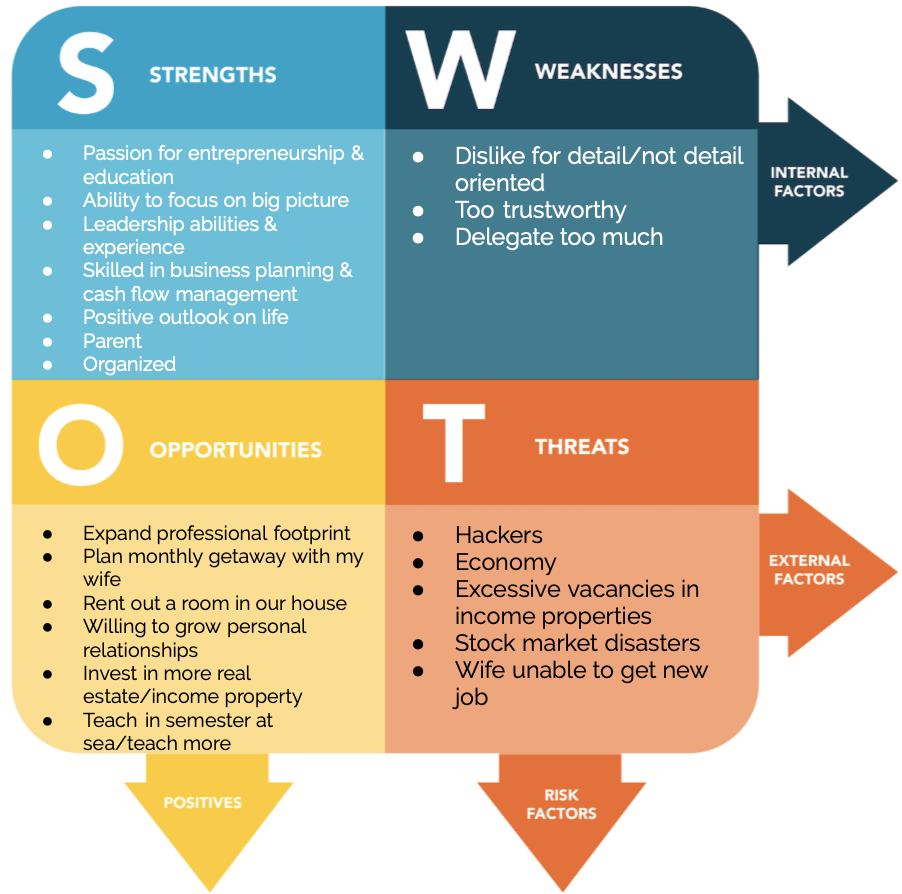If you caught our first podcast then you know a bit about what’s to come here.
SWOT. It is all about strengths and weaknesses which should be viewed as internal ( you/ your business) and opportunities and threats which should be viewed as external (competing business/stock market). This is a SUPER helpful tool when examining you or your business. WHY, well personally if you don’t know what you’re good at, then how do you know how to be great at it? If you don’t know what your weaknesses are, how will you ever improve upon them? Professionally it is the same for businesses. If you don’t know your weaknesses and your competitor does, you will always come in behind them. Obviously not the desired outcome as a business owner.
Check out the bottom of the blog for a free form that will help walk you through SWOT-ing yourself or your business. If you haven’t had the opportunity to listen to our podcast on it, you can listen here or through your Spotify app. Tom and I talk about our experience and had very different views on how to accomplish ours. Check out how we did ours below.
Here is a general idea of how a SWOT should look.
If you listened to episode 2 of the podcast Tom had a hard time separating his personal and professional SWOT and he goes into further depth explaining why. Here is what his SWOT looks like. When I look at his I see where I would separate them, but that’s not how he views himself. So after discussing it, we decided to leave his as one.
When it came to doing my personal SWOT, I had a harder time finding the right verbiage and listing my personal weaknesses. When it came time to doing my professional SWOT for my business, I definitely found it easier because it wasn’t so personal. I did rely on Tom for some input on my personal. Here is my personal AND professional SWOT. I did do two because it was helpful for me to have them separate.
You can see the obvious differences between Tom’s SWOT and mine. What I notice off the bat is the verbiage. I was not as detail oriented about it and he was, which is funny because he says he doesn’t enjoy the details. *rolls eyes* I think it is partly due to the fact that Tom has done more SWOT’s than I have. This is why it is important to do these periodically because you will start to add to them and go in depth with the bigger picture bullet points. I am going to keep mine pinned on my board and try to grow them over the next month. Don’t be afraid to do this with a buddy. Try it on your own first, but definitely feel free to reach out and ask for feedback on your strengths and weaknesses. Just make sure you are prepared to hear them!
If you feel like sharing yours you can do so by emailing us at TheSelinskeStrategy@gmail.com.
As always, if you are listening/reading and you have a question, want advice or clarification, reach out to us and we will be happy to follow up! You can reach us through our contact form here. You can also leave an audio message through our podcast website where it says ‘+Message’.
Drag and drop this worksheet to your desktop so you can get working on your own SWOT!




